3-Aminobenzenesulfonamide
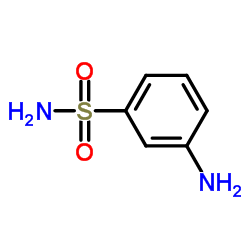
3-Aminobenzenesulfonamide structure
|
Common Name | 3-Aminobenzenesulfonamide | ||
|---|---|---|---|---|
| CAS Number | 98-18-0 | Molecular Weight | 172.205 | |
| Density | 1.4±0.1 g/cm3 | Boiling Point | 420.7±47.0 °C at 760 mmHg | |
| Molecular Formula | C6H8N2O2S | Melting Point | 139 °C | |
| MSDS | Chinese USA | Flash Point | 208.3±29.3 °C | |
| Name | 3-Aminobenzenesulfonamide |
|---|---|
| Synonym | More Synonyms |
| Density | 1.4±0.1 g/cm3 |
|---|---|
| Boiling Point | 420.7±47.0 °C at 760 mmHg |
| Melting Point | 139 °C |
| Molecular Formula | C6H8N2O2S |
| Molecular Weight | 172.205 |
| Flash Point | 208.3±29.3 °C |
| Exact Mass | 172.030655 |
| PSA | 94.56000 |
| LogP | -1.20 |
| Vapour Pressure | 0.0±1.0 mmHg at 25°C |
| Index of Refraction | 1.628 |
Synonym: Section 2 - COMPOSITION, INFORMATION ON INGREDIENTS
Risk Phrases: None Listed. Section 3 - HAZARDS IDENTIFICATION EMERGENCY OVERVIEW
Not available. Potential Health Effects Eye: May cause eye irritation. Skin: May cause skin irritation. May be harmful if absorbed through the skin. Ingestion: May cause irritation of the digestive tract. May be harmful if swallowed. Inhalation: May cause respiratory tract irritation. May be harmful if inhaled. Chronic: Not available. Section 4 - FIRST AID MEASURES Eyes: Flush eyes with plenty of water for at least 15 minutes, occasionally lifting the upper and lower eyelids. Get medical aid. Skin: Get medical aid. Flush skin with plenty of water for at least 15 minutes while removing contaminated clothing and shoes. Ingestion: Get medical aid. Wash mouth out with water. Inhalation: Remove from exposure and move to fresh air immediately. Notes to Physician: Treat symptomatically and supportively. Section 5 - FIRE FIGHTING MEASURES General Information: As in any fire, wear a self-contained breathing apparatus in pressure-demand, MSHA/NIOSH (approved or equivalent), and full protective gear. Extinguishing Media: Use water spray, dry chemical, carbon dioxide, or chemical foam. Section 6 - ACCIDENTAL RELEASE MEASURES General Information: Use proper personal protective equipment as indicated in Section 8. Spills/Leaks: Vacuum or sweep up material and place into a suitable disposal container. Section 7 - HANDLING and STORAGE Handling: Avoid breathing dust, vapor, mist, or gas. Avoid contact with skin and eyes. Storage: Store in a cool, dry place. Store in a tightly closed container. Section 8 - EXPOSURE CONTROLS, PERSONAL PROTECTION Engineering Controls: Use adequate ventilation to keep airborne concentrations low. Exposure Limits CAS# 98-18-0: Personal Protective Equipment Eyes: Not available. Skin: Wear appropriate protective gloves to prevent skin exposure. Clothing: Wear appropriate protective clothing to prevent skin exposure. Respirators: Follow the OSHA respirator regulations found in 29 CFR 1910.134 or European Standard EN 149. Use a NIOSH/MSHA or European Standard EN 149 approved respirator if exposure limits are exceeded or if irritation or other symptoms are experienced. Section 9 - PHYSICAL AND CHEMICAL PROPERTIES Physical State: Solid Color: brown Odor: Not available. pH: Not available. Vapor Pressure: Not available. Viscosity: Not available. Boiling Point: Not available. Freezing/Melting Point: 140 deg C Autoignition Temperature: Not available. Flash Point: Not available. Explosion Limits, lower: Not available. Explosion Limits, upper: Not available. Decomposition Temperature: Solubility in water: Specific Gravity/Density: Molecular Formula: C6H8N2O2S Molecular Weight: 172 Section 10 - STABILITY AND REACTIVITY Chemical Stability: Not available. Conditions to Avoid: Incompatible materials, exposure to air. Incompatibilities with Other Materials: Acids, oxidizing agents. Hazardous Decomposition Products: Carbon monoxide, oxides of nitrogen, oxides of sulfur, carbon dioxide, ammonia. Hazardous Polymerization: Has not been reported Section 11 - TOXICOLOGICAL INFORMATION RTECS#: CAS# 98-18-0: OY2200000 LD50/LC50: Not available. Carcinogenicity: 3-Aminobenzene-1-sulfonamide - Not listed by ACGIH, IARC, or NTP. Other: See actual entry in RTECS for complete information. Section 12 - ECOLOGICAL INFORMATION Section 13 - DISPOSAL CONSIDERATIONS Dispose of in a manner consistent with federal, state, and local regulations. Section 14 - TRANSPORT INFORMATION IATA No information available. IMO No information available. RID/ADR No information available. Section 15 - REGULATORY INFORMATION European/International Regulations European Labeling in Accordance with EC Directives Hazard Symbols: Not available. Risk Phrases: Safety Phrases: S 24/25 Avoid contact with skin and eyes. WGK (Water Danger/Protection) CAS# 98-18-0: 1 Canada CAS# 98-18-0 is listed on Canada's NDSL List. CAS# 98-18-0 is not listed on Canada's Ingredient Disclosure List. US FEDERAL TSCA CAS# 98-18-0 is listed on the TSCA inventory. SECTION 16 - ADDITIONAL INFORMATION N/A |
CHEMICAL IDENTIFICATION
HEALTH HAZARD DATAACUTE TOXICITY DATA
|
| Hazard Codes | Xi: Irritant; |
|---|---|
| Risk Phrases | R36/37/38 |
| Safety Phrases | S24/25 |
| RIDADR | NONH for all modes of transport |
| RTECS | OY2200000 |
| HS Code | 2935009090 |
|
~90% 
3-Aminobenzenes... CAS#:98-18-0 |
| Literature: THE WALTER AND ELIZA HALL INSTITUTE OF MEDICAL RESEARCH Patent: WO2009/39553 A1, 2009 ; Location in patent: Page/Page column 58-59 ; |
|
~% 
3-Aminobenzenes... CAS#:98-18-0 |
| Literature: Bioorganic and Medicinal Chemistry Letters, , vol. 17, # 1 p. 28 - 33 |
|
~% 
3-Aminobenzenes... CAS#:98-18-0 |
| Literature: Bioorganic and Medicinal Chemistry Letters, , vol. 17, # 1 p. 28 - 33 |
|
~% 
3-Aminobenzenes... CAS#:98-18-0 |
| Literature: European Journal of Medicinal Chemistry, , vol. 33, # 2 p. 83 - 93 |
| HS Code | 2935009090 |
|---|---|
| Summary | 2935009090 other sulphonamides VAT:17.0% Tax rebate rate:9.0% Supervision conditions:none MFN tariff:6.5% General tariff:35.0% |
|
Different land use intensities in grassland ecosystems drive ecology of microbial communities involved in nitrogen turnover in soil.
PLoS ONE 8 , e73536, (2013) Understanding factors driving the ecology of N cycling microbial communities is of central importance for sustainable land use. In this study we report changes of abundance of denitrifiers, nitrifiers... |
| m-Aminobenzenesulphonamide |
| aniline-3-sulfonic acid amide |
| Metaniilamide |
| 3-aminobenzene-1-sulfonamide |
| 3-Aminobenzenesulphonamide |
| MFCD00035781 |
| m-Sulfamoylaniline |
| 3-Amino-benzenesulfonamide |
| EINECS 202-646-0 |
| m-Aminobenzenesulfonamide |
| 3-Aminobenzenesulfonamide |
| Metanilamide |
| Benzenesulfonamide, 3-amino- |
| 3-AMINOBENZOL-1-SULFONAMID |
| BENZENESULFONAMIDE,3-AMINO- |
| Benzenesulfonamide,m-amino |
| m-Amino benzene sulfonanilide |
| Benzenesulfonamide,3-amino |
| 3-AMINO BENZENESULFONAMIDE |
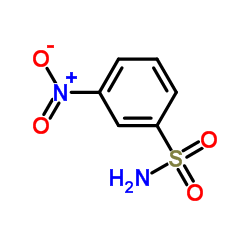
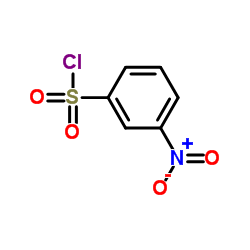
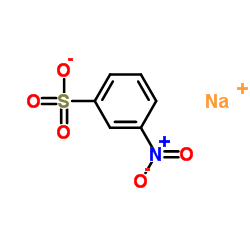
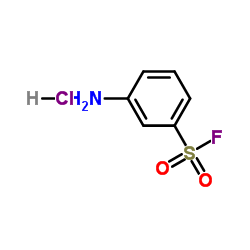
 CAS#:3588-76-9
CAS#:3588-76-9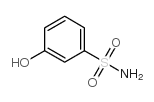 CAS#:20759-40-4
CAS#:20759-40-4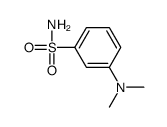 CAS#:63935-19-3
CAS#:63935-19-3
